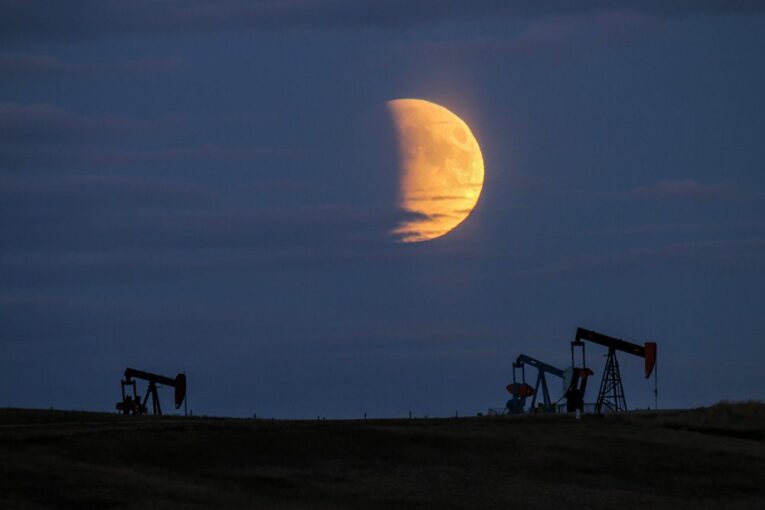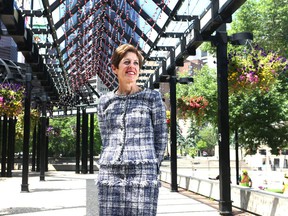
Another federal election is over, capping more moments of anxiety, uncertainty and unpredictability for Canada’s oil and gas industry.
The 2021 election campaign delivered new policy proposals about climate action and curbing emissions, and more talk about promoting carbon capture and storage technology and hydrogen development.
And in the end, it brought about another Liberal minority government.
“We have had an understanding of where this government wants to go … there’s a continued focus on us to improve our GHG emissions,” Tristan Goodman, president of the Explorers and Producers Association of Canada, said Monday evening.
“The No. 1 thing we need is stability and certainty because we know what the policies are.”
With the oil and gas industry recovering from a pandemic-driven downturn last year, producers and oilfield service firms are now looking for policy certainty as commodity prices have stabilized, along with industry fortunes.
Canada, the world’s fourth-largest oil producer, has already set a target of achieving net-zero emissions by 2050. How it gets there will be critical for the sector.
“The biggest thing we need is just visual and vocal support for the industry,” said Andy Mah, CEO of Calgary-based Advantage Oil & Gas.
“It’s (about) confidence that the regulatory and financial-fiscal environment is supportive of the energy industry — and not against it.”

Voting results in Monday’s election showed Liberal Leader Justin Trudeau on track for his second minority government.
After a tumultuous campaign in 2019 left the industry at the centre of a polarizing climate-energy debate, many in the oilpatch had expected a repeat performance this summer. The oil and gas sector accounted for 26 per cent of all emissions in the country two years ago.
But political, business and energy analysts note the sector wasn’t caught up in the campaign crossfire as it was in the last election — and that should make future collaboration easier to achieve.
“As long as these rules don’t keep changing, companies are fine just hunkering down and not being in the limelight,” said analyst Jeremy McCrea of Raymond James.
Heading into the campaign, the Liberals had already pledged to introduce a tax credit to promote carbon capture, utilization and storage (CCUS) for the sector, a key technology for producers to get to net-zero emissions.
The Liberal’s existing climate program will see the national price on carbon rise to $170 per tonne by the end of this decade, up from $40 a tonne, while a new federal clean fuel standard is expected to come into play in 2022.
As part of its platform, the Liberals vowed to put in a “decisive plan” to make sure the oil and gas sector hits net-zero emissions by 2050. Trudeau promised to introduce five-year targets on industry to reach the goal.
The platform also said it would set 2025 and 2030 emissions milestones for the sector, based on the advice of an advisory body.
The Liberal party also set its sights on reducing methane emissions; it promised to require producers to cut their methane emissions by at least 75 per cent by 2030.
While most major oilsands players have already adopted the net-zero target, the interim goals will create more policy uncertainty, said Dan Tsubouchi, chief market strategist at investment firm SAF Group in Calgary.
“That’s the wildcard. We don’t know what the (interim) number is,” he said.
The Conservative Party platform had vowed to change Bill C-69, the Impact Assessment Act, and repeal Bill C-48, the Trudeau government’s ban on oil tankers off the northern coast of British Columbia. Erin O’Toole’s Conservatives also said they would introduce a tax credit to accelerate the deployment of CCUS.
While energy and climate issues were discussed by the two parties and the NDP and Greens, oil and gas issues didn’t resonate as they did in 2019, said Mount Royal University political scientist Duane Bratt. He expects another Liberal government means the status quo will prevail.
“Trans Mountain is still getting built, carbon taxes are still being collected, there’s still co-operation with the provincial government on carbon capture,” he said. “It looks pretty much like the past has.”

For Calgary Chamber of Commerce CEO Deborah Yedlin, the incoming Liberal government will need to provide meaningful support for oilsands companies to reach their net-zero target, if they are to be successful.
“We want to see a sound climate strategy that doesn’t strand the energy assets that we have. And that means supporting the energy decarbonization that has to happen,” she said.
After the divisive debates surrounding pipelines and climate policy over the past decade, will we finally see a period of stability surrounding Ottawa-oilpatch relations? That remains to be seen, as the energy transition picks up speed.
At the same time, this is a period of improving strength for the oilpatch following a turbulent 18 months, with robust commodity prices expected.
“The oil and gas industry is in great shape. The cash flows have never been better … and our Canadian companies are well-positioned to benefit,” Tsubouchi added.
“I don’t think for one moment it’s a commodity risk (that’s ahead). It’s policy risk.”
Chris Varcoe is a Calgary Herald columnist.
You can read more of the news on source
